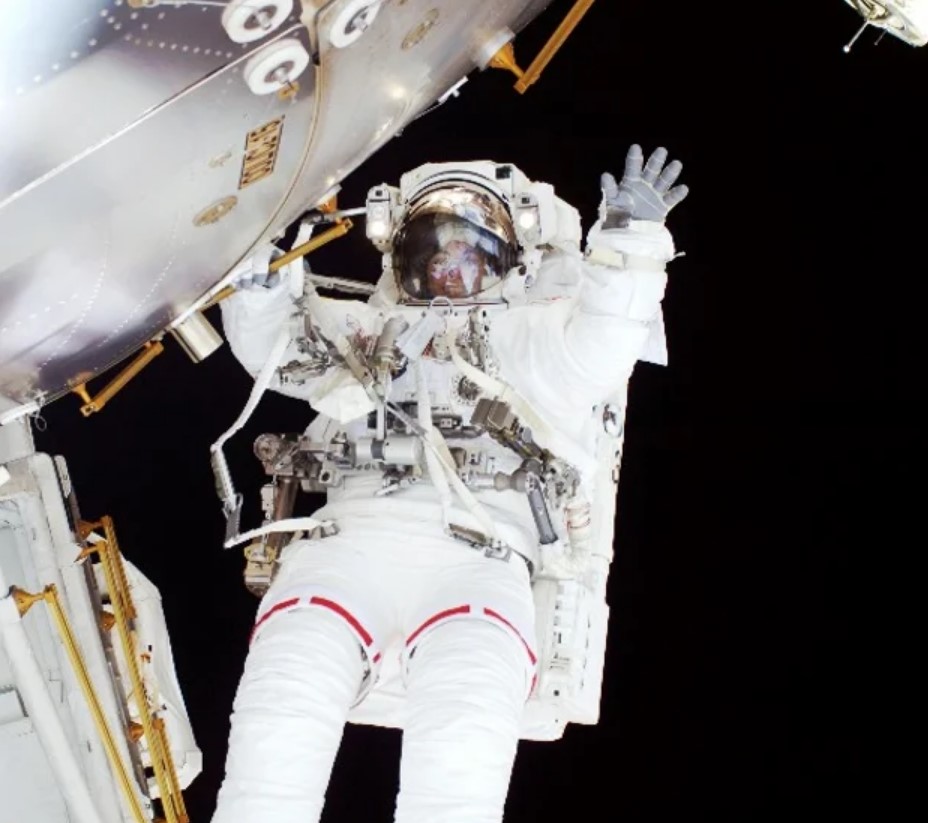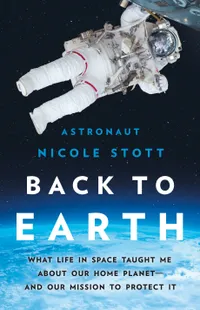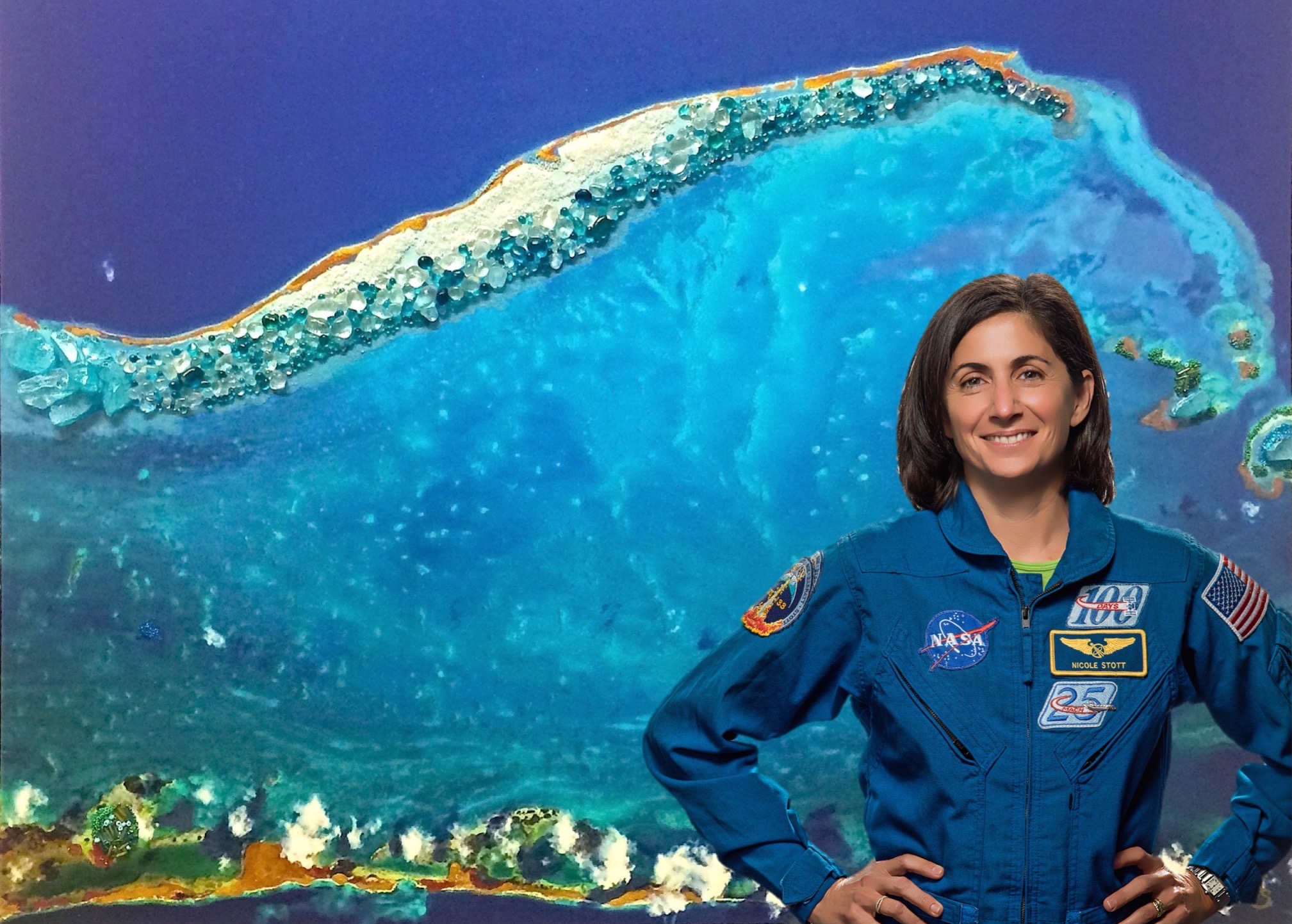Book excerpt: 'Back to Earth' (Seal Press, 2021) by astronaut Nicole Stott
Retired NASA astronaut Nicole Stott brings the lessons of the space station to Earth.

How can going to space change the way we live on Earth? Sure, spaceflight leads to new technologies, but it also offers new philosophies.
That's according to retired NASA astronaut Nicole Stott in her new book, "Back to Earth: What Life in Space Taught Me About Our Home Planet — And Our Mission to Protect It" (Seal Press, 2021). Stott explores the philosophies that govern the International Space Station and the ways we must embrace them on Earth to handle the crises currently facing humanity.
In Chapter 2, she explains that when she looked down at Earth from orbit, she was struck by the contrast between the blue of Earth's atmosphere and the black of space — and by how fragile that line looked from above.
You can also read an interview with Stott.
Related: Best space and sci-fi books for 2021
Back to Earth: What Life in Space Taught Me About Our Home Planet — And Our Mission to Protect It | $25.49 from Amazon
Retired NASA astronaut Nicole Stott outlines how living and working on the International Space Station changed the way she thinks about living on Earth in hopes of inspiring readers to take a new perspective on being an Earthling.
Chapter 2: Respect the Thin Blue Line
Rowan Henthorn is a marine scientist and ocean advocate who had lived on the island all of her twenty-seven years and was working for the Isle of Man government as a climate change researcher and ecosystem officer. In 2018, she was a member of the crew of the first eXXpedition North Pacific mission to what is known as the Great Pacific Garbage Patch. The aim of the on‑going, all-female eXXpedition sailing voyages, which I had followed from afar through social media, is to "raise awareness of, and solutions for, the devastating environmental and health impacts of single-use plastic and toxins on the world's oceans. To make the unseen seen."
Like most people, when I first heard of this place called the Great Pacific Garbage Patch, I imagined a massive floating island of garbage, perhaps even the size of the Isle of Man, on the surface of the ocean. My imagination was not imaginative enough because, while not an actual island, the garbage patch is estimated to be twice the size of Texas — about 2,500 times larger than the Isle of Man! Regardless, I wondered if I could have seen it from space (I could not). In reality, these patches are largely unseen. Flying just above it or sailing through it, you do not see an island of garbage at all, only some cloudiness in the water and smaller clumps of floating trash. This is why it's more appropriately described as an oceanic smog than an island. These garbage patches are out of sight in the middle of the Pacific Ocean, so they often remain out of mind, but that doesn't make them any less problematic.
Breaking space news, the latest updates on rocket launches, skywatching events and more!
Figuring out how much plastic is really there and how to clean it up is made even more complicated by the fact that the bulk of the debris is teeny tiny — what's known as "microplastics." Trillions of pieces of microplastics are mixed with larger pieces of debris, such as discarded fishing equipment and nets and other larger varieties of trash. All this moves through the ocean in the swirling currents known as a "gyre." So, this garbage is not only an issue on the ocean's surface but is distributed throughout the water column. Microplastics have been discovered polluting the deepest explored parts of the ocean (and at the tops of the highest mountains).
I found it difficult to wrap my mind around this amount of microplastics infiltrating our oceans. I've seen the models that scientists have built to represent how many satellites and how much space junk is circling our planet, which is difficult enough for me to comprehend, but that pales in comparison to the millions of times more plastic in the ocean. To me, it's overwhelming.
Rowan and I spoke of her commitment to meaningfully share her eXXpeditionary experience of sailing in the midst of this plastic and to bring it to life for her fellow islanders at home. She is working hard at both the governmental and grassroots levels to draft the island's policies for plastics and its response to climate change, and to raise awareness and encourage sustainable improvements to the quality of life both on and off the island. She also helped me become aware of the surprising number of positive environmental protection and sustainability initiatives happening on the Isle of Man.
I asked Rowan if she thought that people would be more encouraged to take action if the garbage patch really was a massive island of plastic floating on the surface of the ocean.
"They already think it is, so I'm not sure there would be a greater response, unless maybe if it was floating in their own backyard." Then, with a little more excitement in her voice, she added, "When you are in the middle of it, you look out on a blue expanse of water around you, for as far as the eye can see it's blue. Yes, there are many recognizable plastic items floating past the boat, but in large it's blue. It's not until you put a net in the water that you realize that you are surrounded by trillions of tiny, microscopic pieces of plastic.
"For me that's much scarier than a plastic island. A plastic island in a way seems manageable — scary, but manageable. That's why it's so important to make the unseen seen. I hope it helps people to realize that the solutions to issues like this start on land, with our actions. There is no silver bullet that's going to suddenly scoop all the plastic out of the ocean. We have to change our systems and our behavior — we have to turn off the tap!"
You'd think that traveling to space or sailing three thousand miles across the ocean would allow you to truly "get away," but it doesn't.
As Rowan put it, "There is no 'away.'"
There's no "away" for us because no matter where we go, even to these remote places, we still experience the impact of our own human behavior, and the evidence of our behavior is presented to us through the stuff that doesn't go away, like the plastic in our oceans. There is continuity in all this. I think it all comes down to the interconnectivity of everything that surrounds us: we live on a planet surrounded by unseen MMOD [micrometeoroids and orbital debris, which pose a threat to the International Space Station], protected by the thin blue line of atmosphere that surrounds and contains the air, land, and sea, and all the life that inhabits these places, even the microplastics permeating our oceans. All is interconnected, and all influences the planet's ability to sustain life in one way or another.
Excerpted from "Back to Earth: What Life in Space Taught Me About Our Home Planet—And Our Mission to Protect It" by Nicole Stott. Copyright © 2021. Available from Seal Press, an imprint of Hachette Book Group, Inc.
You can buy "Back to Earth" at Amazon or Bookshop.org.
Follow us on Twitter @Spacedotcom and on Facebook.

Nicole is an astronaut, aquanaut, artist, mom, and now author of her first book Back to Earth ~ What Life In Space Taught Me About Our Home Planet - And Our Mission To Protect It. She creatively combines the awe and wonder of her spaceflight experience with her artwork to inspire everyone's appreciation of our role as crewmates here on Spaceship Earth.


